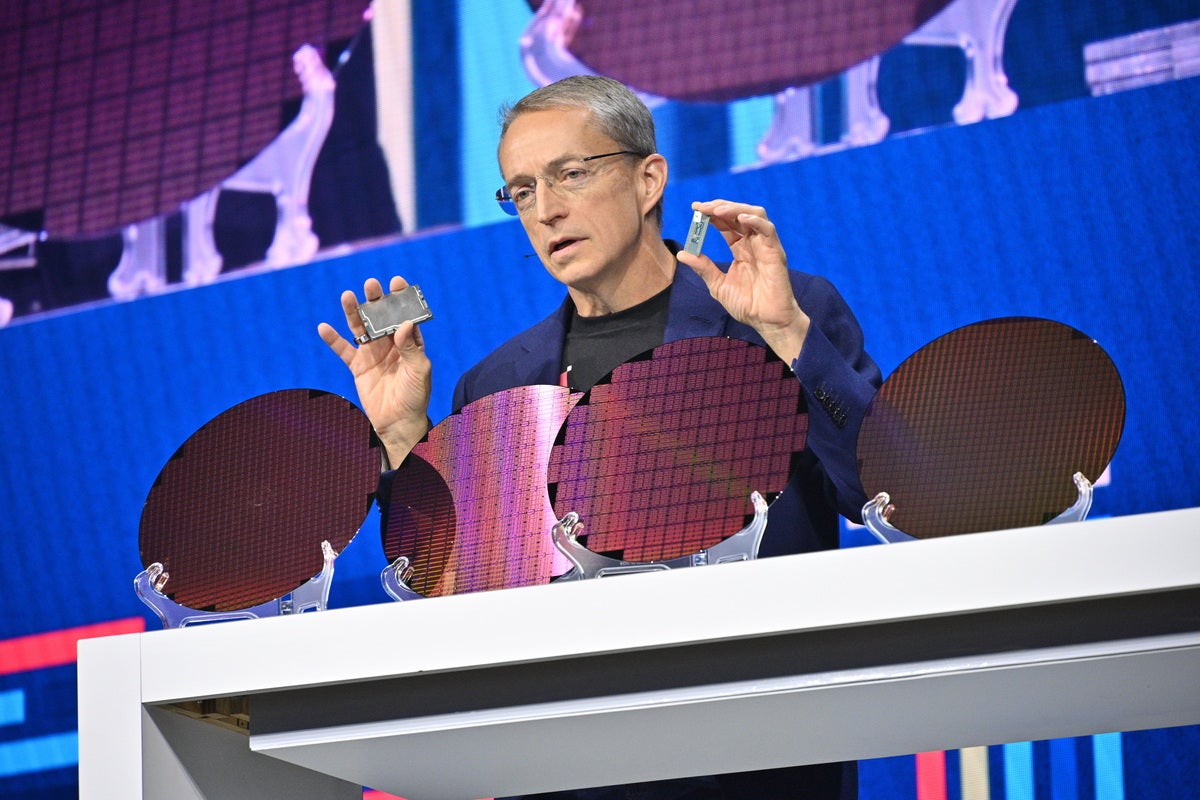- “2025년 스테이블코인 투자 2024년 대비 10배 예상”···CB인사이츠, ‘스테이블코인 시장 지도’ 공개
- The best portable power stations for camping in 2025: Expert tested and reviewed
- "제조 업계, 스마트 기술 전환 중··· 95%가 AI 투자 예정" 로크웰 오토메이션
- What to Do If You Book a Hotel or Airbnb and It Turns Out to Be a Scam | McAfee Blog
- Cómo evitar la fuga de cerebros en TI
New chip designs on display at Intel Innovation 2023

Intel took the wraps off a number of new chip designs during its Innovation 2023 event in San Jose, Calif. Among the highlights is a preview of fifth-generation Xeon processors, which gain performance improvements and faster memory while using the same amount of power as the current generation.
Scheduled to launch beginning December 14 and going into 2024, the fifth generation of Xeon processors splits the structure into two different core designs: the P (for performance) core, codenamed Granite Rapids, and the E (for efficient) core, codenamed Sierra Forest. P cores are high-performance cores for maximum computing power, while E cores are smaller, much less power-hungry, and designed for simpler tasks.
The Granite Rapids processor will offer two- to three-times better AI performance compared to 4th Gen Xeon. The new Sierra Forest Xeon processor, including a version with 288 E-cores, will deliver 2.5 times better rack density and 2.4 times higher performance per watt over 4th Gen Xeon when it ships in the first half of 2024
Intel details future Meteor Lake design
Intel also gave a deep dive on what to expect from its client processors. For a glimpse of what’s coming next in the Xeon lineup, it’s important to watch what’s happening with the Core line of desktop processors, because that’s where new features are introduced first. Intel first introduced its mix of Performance and Efficiency cores with the Alder Lake generation of desktop and mobile processors, for example.
Looking ahead, Intel will ship Core Ultra processors, code-named Meteor Lake, on December 14. On the same day, we’ll see Intel’s first integrated neural processing unit, or NPU, for power-efficient AI acceleration and local inference on the PC. Intel CEO Pat Gelsinger confirmed Core Ultra will also launch on Dec. 14.
Meteor Lake introduces a new design for Intel CPUs: tiles (or chiplets) rather than a single monolithic piece of silicon. It comes with four tiles – one for the CPU, GPU, SoC, and I/O – bound together with a high-speed interconnect. AMD has used this design for several years now. What’s interesting is that this processor was partly made by Intel and partly made by TSMC rather than entirely made by Intel.
The NPU is another new element in Meteor Lake. The NPU, or AI accelerator, is part of the CPU tile. Intel hasn’t gone beyond the talking stage, so it’s not clear exactly what it does, but it will probably be similar to the AI processor in the AMD 7004 series of server processors.
Intel supercomputer news
As part of the keynote kicking off the show, Gelsinger announced a large AI supercomputer will be built entirely on Intel Xeon processors and Intel Gaudi AI hardware accelerators from Intel’s Habana Labs acquisition.
The supercomputer is being built in partnership with Stability AI, the creator of the Stability Diffusion text-to-image model. The supercomputer will be the largest AI system in Europe and among the world’s top 15 AI supercomputers when it’s completed, according to Gelsinger. The company did not say when it will complete the supercomputer.
Gelsinger also announced the launch of Project Strata to promote the development of an edge-native software platform for building an intelligent edge infrastructure powered by AI. The solution will provide developers with modular building blocks to build, deploy, run, manage, connect and secure distributed edge infrastructure and applications.
Lastly, the Intel Developer Cloud has exited beta and is now generally available, giving developers access to AI/HPC security workloads across Intel’s array of data center and product offerings.
Copyright © 2023 IDG Communications, Inc.

